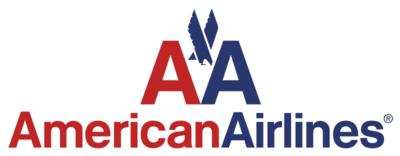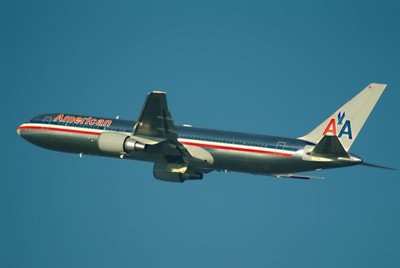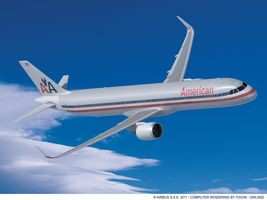Targets $3 Billion in Annual Financial Improvement by 2017,
Requires Significant Cost Reductions, Including Employee-Related
Savings Across All Work Groups
American Airlines has released a business plan which targets an
annual financial improvement of more than $3 billion by 2017,
including $2 billion in cost savings and $1 billion in revenue
enhancements. The airline says additional cash flow will enable
American to renew its fleet and to invest several hundred million
dollars per year in ongoing improvements in products and services
to deliver a world-class travel experience for customers. The
improved cash flow will also allow American to further reduce its
debt and become financially stronger in the years after its
emergence from the restructuring process.

Tom Horton, Chairman and Chief Executive Officer, said,
"American Airlines is moving forward decisively. The plan we are
outlining today provides the framework for a new American Airlines,
positioned to succeed in an intensely competitive industry that has
been transformed by our competitors' recent restructurings. Just as
other airlines have done and will continue to do, we must invest
restructuring-related cost savings in ongoing innovation and
customer service improvements that drive revenue. The airlines that
have failed to adapt to these changes are no longer in business.
Change will be difficult, particularly as we will be ending this
process with fewer people, but it is a necessity. American is ready
to compete and win."
Horton further noted that in connection with the implementation
of American's business plan, the company intends to engage in
appropriate negotiations with its economic stakeholders and union
representatives and seek necessary Bankruptcy Court approvals.
American's plans build on initiatives already in place that
reduced costs significantly over the past several years, including
major changes to its route structure, network, capacity and fleet.
Utilizing the benefits of the restructuring process, American
intends to realize additional savings over the next six years by
restructuring debt and leases, grounding older planes, improving
supplier contracts, and undertaking other initiatives. A central
element of American's transformation is the overhaul of its fleet,
which will reduce fuel, maintenance, and financing costs, and
provide improved profitability and growth over time, by enabling
American to better match the right equipment to the right
routes.

A fundamental element of American's plan, which is designed to
allow it to exit restructuring and vigorously compete and win,
includes employee cost reductions across all work groups. American
informed employees earlier today that all groups, including
management, must reduce their total costs by 20 percent. While the
savings from each work group will be achieved somewhat differently,
the plan provides that each will experience the same percentage
reduction. These reductions would result in average annual
employee-related savings of $1.25 billion from 2012 through
2017.
As described in its internal announcements Tuesday, American's
business plan and proposals encompass a total reduction of
approximately 13,000 employees. Included in the total employee
impact is the expected result of a previously launched redesign of
American's management and support staff structure that will reduce
15 percent of management positions.
Consistent with the approach taken by other major airlines in
their restructurings, American's plan also includes:
- Outsourcing a portion of American's aircraft maintenance work,
including seeking closure of the Fort Worth Alliance Airport (AFW)
maintenance base, and certain airport fleet service clerk
work.
- Removing major structural barriers to operational flexibility,
such as restrictions on codesharing and regional flying
- Introducing work rule changes to increase productivity.

American also said it will seek Bankruptcy Court approval to
terminate its defined benefit pension plans. If the plans are
terminated, American will contribute matching payments in a 401(k)
plan. American also will seek to discontinue subsidizing future
retiree medical coverage for current employees, but will offer
access to these plans if employees choose to pay for them. American
also proposes to implement common medical plans and contribution
structures across all active employee groups. "These are painful
decisions," Horton continued, "but they are essential to American's
future. We will emerge from our restructuring process as a leaner
organization with fewer people, but we will also preserve tens of
thousands of jobs that would have been lost if we had not embarked
on this path – and that's a goal worth fighting for. By
reinvesting savings back into our business, we will support job
growth, including growth at our suppliers and partners over the
long run. Only a successful, profitable and growing American
Airlines can provide stability and opportunity for our people."
With financial and operational flexibility and an improved cost
and capital structure, American also plans to drive revenue growth
by:
- Renewing and optimizing its fleet by investing an average of
about $2 billion per year in new aircraft, so that by 2017
American's mainline jet fleet will be the youngest in North
America, with the versatility to better match aircraft size to its
markets. This step is central to American's transformation, as it
means more profitable flying due to markedly improved fuel and
maintenance costs and higher revenue generation.
- Building network scale and alliances by increasing departures
across American's five key markets – Dallas/Fort Worth,
Chicago, Miami, Los Angeles and New York – by 20 percent over
the next five years, and by increasing international flying.
- Modernizing its brand, products and services by investing
several hundred million dollars per year in enhancements to the
customer experience that will, once again, make American the
premier airline of high-value customers.
In order to ensure that employee performance is rewarded and
aligned with American's future success, the company envisions
putting in place a profit sharing plan which, beginning with the
first dollar of pre-tax income, would pay awards totaling 15
percent of all pre-tax income.
"We have an extraordinary opportunity to create a new
world-class airline, with a leaner, customer-focused culture of
accountability and high performance. The best way for us to achieve
this – and ensure that we are in control of our own future
– is to make the necessary changes, complete our
restructuring quickly, and continue working hard to put American
Airlines back in a position of industry leadership," Horton
concluded.
 NTSB Final Report: Cozy Cub
NTSB Final Report: Cozy Cub ANN FAQ: Contributing To Aero-TV
ANN FAQ: Contributing To Aero-TV Classic Aero-TV: Seated On The Edge Of Forever -- A PPC's Bird's Eye View
Classic Aero-TV: Seated On The Edge Of Forever -- A PPC's Bird's Eye View ANN's Daily Aero-Linx (04.29.25)
ANN's Daily Aero-Linx (04.29.25) ANN's Daily Aero-Term (04.29.25): Execute Missed Approach
ANN's Daily Aero-Term (04.29.25): Execute Missed Approach





